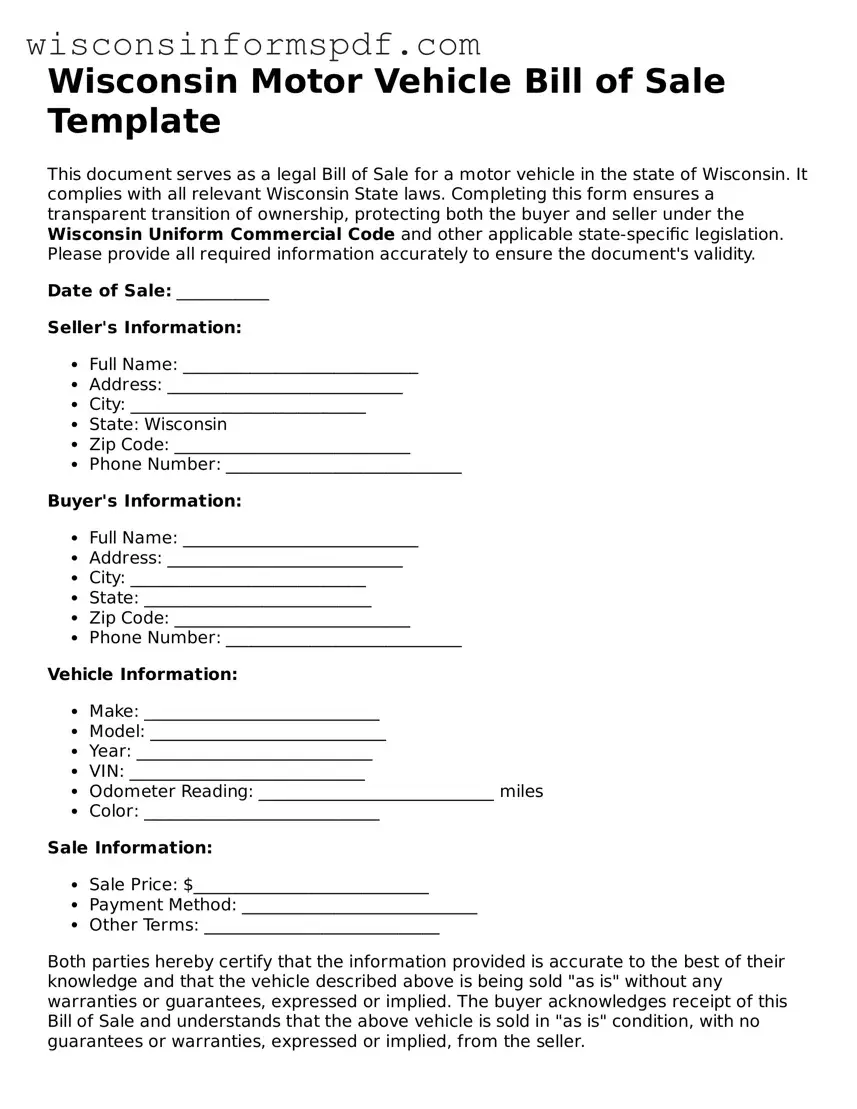What is a Motor Vehicle Bill of Sale form in Wisconsin?
A Motor Vehicle Bill of Sale form in Wisconsin is a legal document that records the sale of any vehicle within the state. It's proof that a transaction occurred between a buyer and a seller, outlining the specifics like the sale price, vehicle description, and the identities of the involved parties. This document is not only beneficial for record-keeping but may also be necessary for the buyer to register the vehicle and for tax purposes.
Do I need a Motor Vehicle Bill of Sale to register a vehicle in Wisconsin?
Yes, when registering a vehicle in Wisconsin, having a Motor Vehicle Bill of Sale is highly recommended as it facilitates the process. While Wisconsin's Department of Transportation (DOT) may not always require it for registration, this document provides solid proof of ownership and sale details, which can help avoid potential disputes or issues with the registration process. For a smooth registration, keep this document handy along with other required paperwork.
What information should be included in a Wisconsin Motor Vehicle Bill of Sale?
A Wisconsin Motor Vehicle Bill of Sale should contain important details to ensure it's comprehensive. Include the full names and addresses of both the buyer and the seller, a detailed description of the vehicle (including make, model, year, and VIN), the sale price, the date of sale, and the signatures of both parties involved. Including an odometer reading is also crucial for a transparent transaction. This thorough approach protects all parties if any disputes arise later.
Can I create my own Motor Vehicle Bill of Sale, or do I need a special form?
In Wisconsin, you're allowed to create your own Motor Vehicle Bill of Sale. There isn't a mandatory state-provided form for private vehicle sales, so you have the flexibility to draft one that meets state requirements. However, ensure that all the necessary details are included to validate the sale. Some people opt to use templates available online for convenience and to make sure they don't miss out on any critical information.
Is a notarized Motor Vehicle Bill of Sale required in Wisconsin?
No, Wisconsin does not require that a Motor Vehicle Bill of Sale be notarized. While having the document notarized can add an extra layer of authenticity and might be beneficial in providing peace of mind for both the buyer and the seller, it isn't a legal requirement for the sale or the vehicle registration process in the state. Simply ensure that both parties' signatures are on the document to make it valid.
